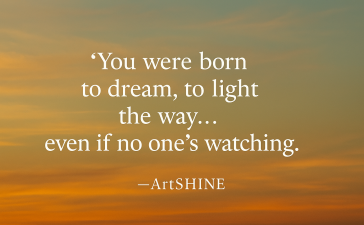Thanksgiving is one of the most celebrated and cherished holidays in the United States, a time when families and friends gather to give thanks for the year’s blessings. While Thanksgiving is widely associated with its famous feast featuring a roasted turkey, the holiday is much more than just a culinary extravaganza. It has a rich history, deep significance, and enduring symbolism that goes beyond borders.
Historical Roots: The Origins of Thanksgiving
The origins of Thanksgiving trace back to the early 17th century when a group of English Pilgrims, seeking religious freedom, embarked on a perilous journey to the New World. In 1620, they arrived in what is now known as Plymouth, Massachusetts, where they encountered harsh conditions, unfamiliar terrain, and the onset of a severe winter.
The Pilgrims’ first year in the New World was fraught with hardship, with many succumbing to illness and harsh weather. In the following year, they formed a critical alliance with the Wampanoag Native Americans, particularly Squanto, who taught them valuable agricultural techniques and helped forge relations with neighboring tribes.
In November 1621, after a successful harvest and a collaborative effort between the Pilgrims and the Native Americans, the settlers celebrated with a three-day feast. This momentous event is often regarded as the first Thanksgiving, a celebration of the Pilgrims’ survival and gratitude for the help they received.
Significance and Symbolism: Giving Thanks
Thanksgiving embodies several core themes that make it a significant and symbolic holiday. At its heart, it’s a day to express gratitude for the bounties of the past year. It’s a time to reflect on the blessings of life, the support of loved ones, and the privilege of having food, shelter, and companionship.
Furthermore, Thanksgiving serves as a reminder of the unity and harmony that can be achieved when people from different backgrounds and cultures come together. The alliance between the Pilgrims and the Native Americans underscores the idea of cooperation and shared values, a message that continues to resonate today.
The Thanksgiving feast, featuring a roasted turkey, stuffing, cranberry sauce, and an array of side dishes and desserts, is a symbol of abundance and communal sharing. The turkey, in particular, has become synonymous with the holiday and embodies the idea of togetherness.
Preserving Traditions: Passing Down the Legacy
Thanksgiving is not just a historical celebration; it’s a living tradition passed down through generations. Families across the United States have their unique customs and rituals that they observe year after year. These traditions help keep the spirit of Thanksgiving alive and ensure that its significance endures.
One common tradition is the preparation of a lavish feast. Families come together to cook, bake, and create a memorable meal. They gather around the dinner table, sometimes sharing what they are thankful for, and partake in the joy of eating together. The Thanksgiving parade in New York City, featuring enormous balloons and dazzling floats, is another cherished tradition. For many, it’s a must-watch event on Thanksgiving morning.
Another tradition is the practice of volunteering and giving back to the community. Many individuals and families use Thanksgiving as an opportunity to help those less fortunate, whether by serving meals at a soup kitchen or donating to charitable organizations. Acts of kindness and generosity are central to the holiday’s spirit.
Passing down family recipes and customs is also vital in keeping Thanksgiving traditions alive. The way a particular dish is prepared or the games played after dinner often have a unique family touch that generations treasure. These customs are a way of connecting with the past and sharing the values of gratitude and togetherness with the younger members of the family.
Beyond Borders: Thanksgiving Worldwide
While Thanksgiving is primarily celebrated in the United States on the fourth Thursday of November, its influence is felt worldwide. The idea of giving thanks, celebrating abundance, and promoting unity resonates with people from different cultures and backgrounds. Canada, for example, celebrates its own version of Thanksgiving in October, giving thanks for the harvest and blessings of the past year.
Thanksgiving has also gained recognition in countries outside North America, as the global community increasingly adopts the practice of expressing gratitude and celebrating abundance. While the traditions may differ, the core value of Thanksgiving—gratitude—is a universal sentiment that transcends borders.
In conclusion, Thanksgiving is more than just a holiday centered around a grand meal. It’s a celebration of gratitude, unity, and the enduring legacy of cooperation between different communities. As families gather around tables, pass down traditions, and share acts of kindness, they not only honor the history of Thanksgiving but ensure that its significance lives on for generations to come. Thanksgiving is a cultural touchstone, a time to reflect on the abundance of life and the value of coming together in gratitude, an enduring tradition that continues to make a difference in people’s lives around the world.
Want to learn more?
- Find out more
- Launch Pad + Accelerator Expressions of Interest
- Selling and Licensing Your Art & Designs Around the World with ArtSHINE.
We’re here to help you to take action, just like we’ve helped thousands of other entrepreneurs, business owners, and creative professionals all around the globe.
Now is the time to let your passion SHINE.
Now is the time to Make Tomorrow Today!
To your success, Vinh Van Lam and Stuart Horrex Cofounders
ArtSHINE.com





